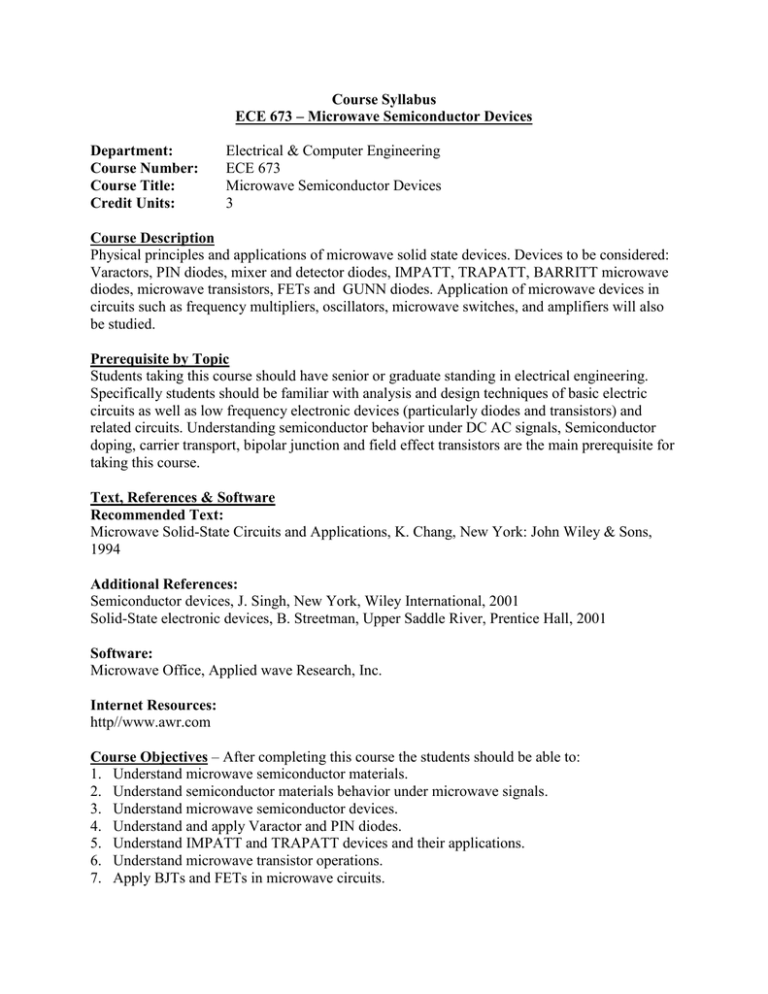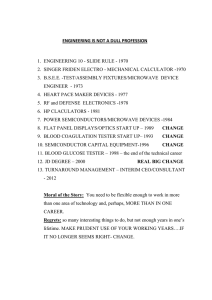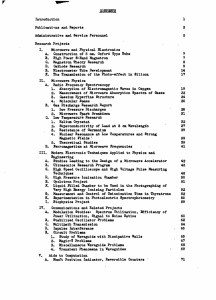ECE 673 (.doc)
advertisement

Course Syllabus ECE 673 – Microwave Semiconductor Devices Department: Course Number: Course Title: Credit Units: Electrical & Computer Engineering ECE 673 Microwave Semiconductor Devices 3 Course Description Physical principles and applications of microwave solid state devices. Devices to be considered: Varactors, PIN diodes, mixer and detector diodes, IMPATT, TRAPATT, BARRITT microwave diodes, microwave transistors, FETs and GUNN diodes. Application of microwave devices in circuits such as frequency multipliers, oscillators, microwave switches, and amplifiers will also be studied. Prerequisite by Topic Students taking this course should have senior or graduate standing in electrical engineering. Specifically students should be familiar with analysis and design techniques of basic electric circuits as well as low frequency electronic devices (particularly diodes and transistors) and related circuits. Understanding semiconductor behavior under DC AC signals, Semiconductor doping, carrier transport, bipolar junction and field effect transistors are the main prerequisite for taking this course. Text, References & Software Recommended Text: Microwave Solid-State Circuits and Applications, K. Chang, New York: John Wiley & Sons, 1994 Additional References: Semiconductor devices, J. Singh, New York, Wiley International, 2001 Solid-State electronic devices, B. Streetman, Upper Saddle River, Prentice Hall, 2001 Software: Microwave Office, Applied wave Research, Inc. Internet Resources: http//www.awr.com Course Objectives – After completing this course the students should be able to: 1. Understand microwave semiconductor materials. 2. Understand semiconductor materials behavior under microwave signals. 3. Understand microwave semiconductor devices. 4. Understand and apply Varactor and PIN diodes. 5. Understand IMPATT and TRAPATT devices and their applications. 6. Understand microwave transistor operations. 7. Apply BJTs and FETs in microwave circuits. 8. Understand and apply GUNN devices. 9. Apply GUNN devices in frequency multipliers and oscillators. 10. Understand MESFET and CMOS applications in microwave amplifiers. 11. Apply PIN diodes in microwave switches. 12. Microwave Integrated circuits Topics Covered/Course Outline 1. Microwave semiconductor materials. 2. Microwave diodes. 3. Microwave transistors. 4. Microwave Device fabrication and processing. 5. Microwave amplifiers. 6. Microwave oscillators. 7. Microwave detectors and mixers. 8. Microwave control circuits 9. Microwave Integrated circuits Relationship to Program Outcomes This supports the achievement of the following outcomes: a) Ability to apply knowledge of advanced principles to the analysis of electrical engineering problems. b) Ability to apply knowledge of advanced techniques to the design of electrical engineering systems. c) Ability to apply the appropriate industry practices, emerging technologies, state-ofthe-art design techniques, software tools, and research methods of solving electrical engineering problems. d) Ability to learn new subjects that are required to solve problems in industry without Being dependent on a classroom environment. e) Ability to be competitive in the engineering job market or be admitted to an excellent Ph. D. program. Prepared by: Matthew Radmanesh December 22, 2002




